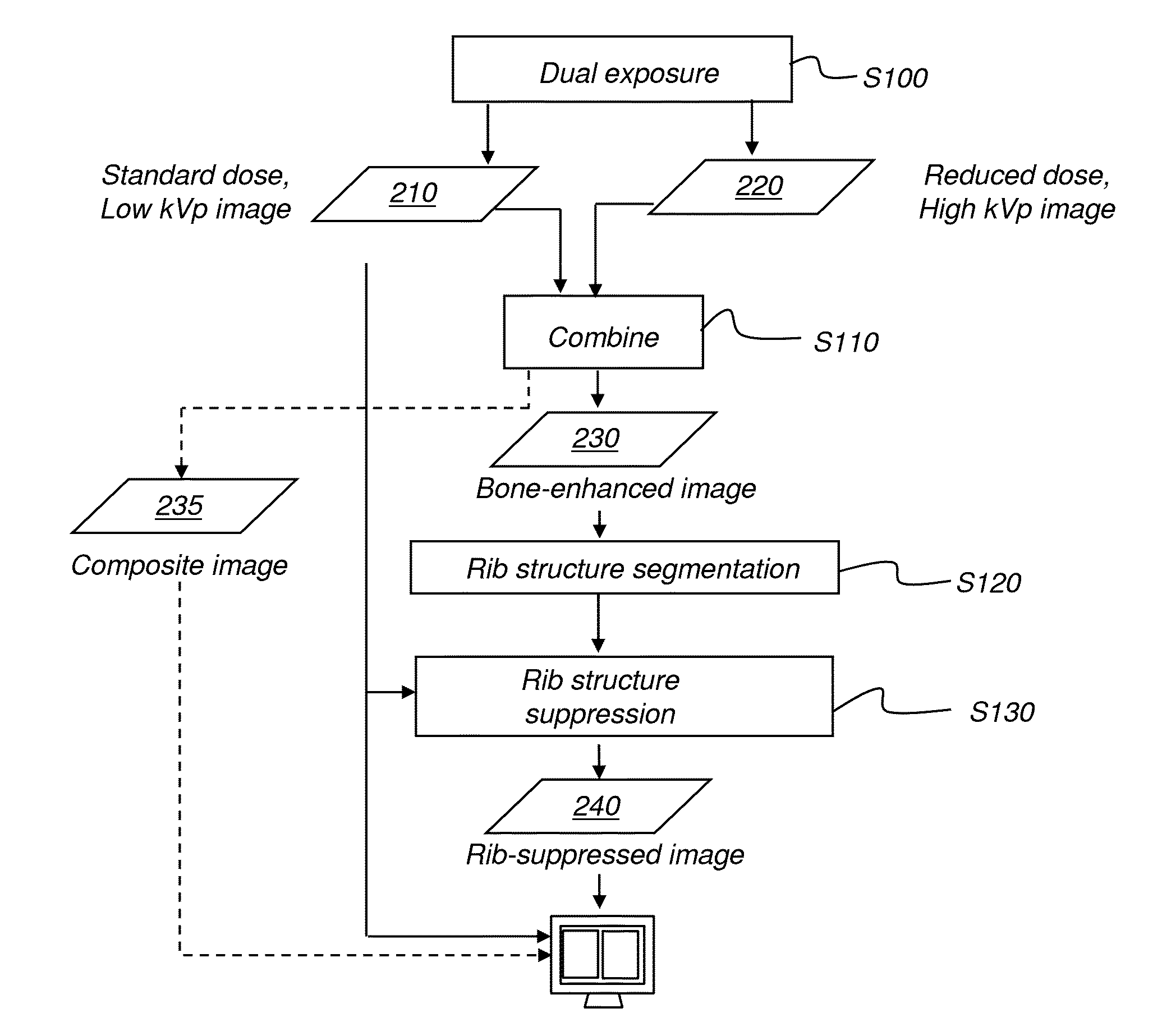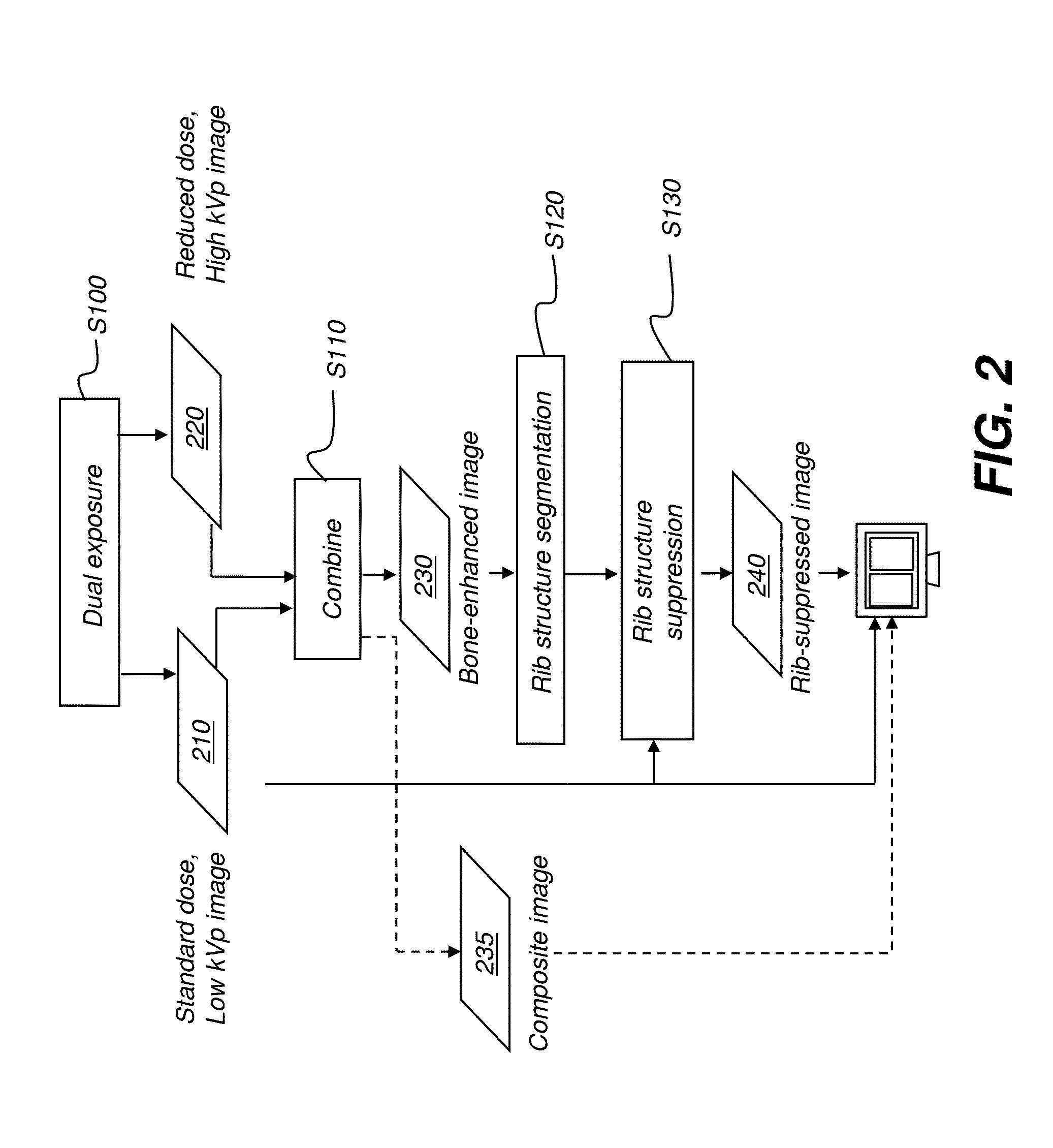Hybrid dual energy imaging and bone suppression processing
a dual-energy imaging and processing technology, applied in the field of chest x-ray imaging, can solve the problems of difficult to interpret chest x-ray images in many cases, complicated chest x-ray imaging task, and rarely used in practice, so as to improve the contrast of lung tissue, improve imaging parameters and processing, and reduce patient exposure
- Summary
- Abstract
- Description
- Claims
- Application Information
AI Technical Summary
Benefits of technology
Problems solved by technology
Method used
Image
Examples
Embodiment Construction
[0031]The following is a detailed description of the preferred embodiments of the invention, reference being made to the drawings in which the same reference numerals identify the same elements of structure in each of the several figures.
[0032]Where they are used, the terms “first”, “second”, “third”, and so on, do not necessarily denote any ordinal or priority relation, but may be used for more clearly distinguishing one element or time interval from another.
[0033]In the context of the present disclosure, the term “effective dose” relates to a tissue-weighted sum of equivalent dose, a measure of absorbed dose, in specified tissues and organs of the body. Effective dose is typically quantified in sieverts (Sv). The term “standard dose” relates to standard values of effective dose that apply for a particular type of exam and is determined, in part, by practices followed at a particular radiographic imaging site.
[0034]In the context of the present disclosure, a digital chest x-ray can...
PUM
 Login to View More
Login to View More Abstract
Description
Claims
Application Information
 Login to View More
Login to View More - R&D
- Intellectual Property
- Life Sciences
- Materials
- Tech Scout
- Unparalleled Data Quality
- Higher Quality Content
- 60% Fewer Hallucinations
Browse by: Latest US Patents, China's latest patents, Technical Efficacy Thesaurus, Application Domain, Technology Topic, Popular Technical Reports.
© 2025 PatSnap. All rights reserved.Legal|Privacy policy|Modern Slavery Act Transparency Statement|Sitemap|About US| Contact US: help@patsnap.com



